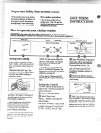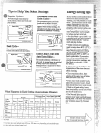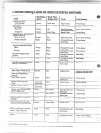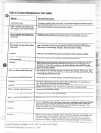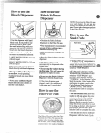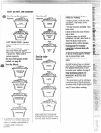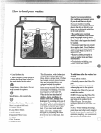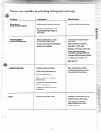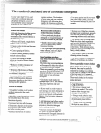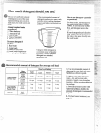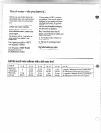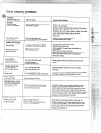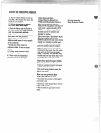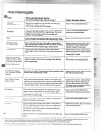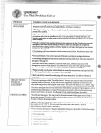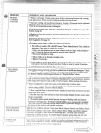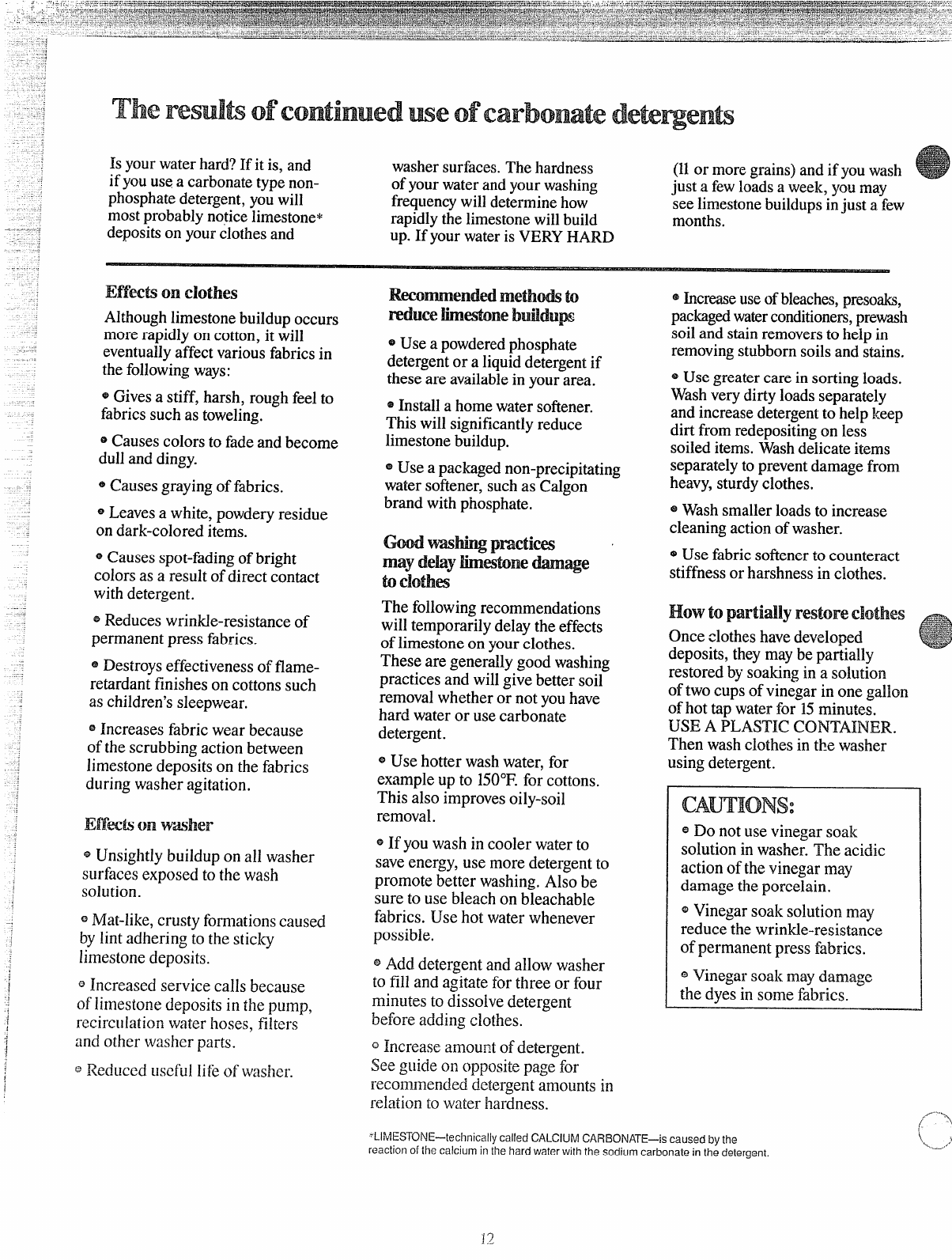
Is your waterhard?Ifit is, and
washersurfaces.The hardness
if youusea carbonatetypenon-
ofyourwaterandyourwashing
phosphatedetergent,youwill
frequencywilldeterminehow
mostprobablynoticelimestone*
rapidlythelimestonewillbuild
depositson your clothesand
up. If your wateris VERYHARD
(11or moregrains)and ifyouwash
just a fewloadsa week, youmay
see limestonebuildupsinjust a few
months.
EHwk on c~othes
Althoughlimestonebuildupoccurs
more rapidly on cotton, it will
eventuallyaffect variousfabricsin
the followingways:
* Givesa stiff, harsh, roughfeelto
fabricssuch as toweling.
~Causescolors to fadeand become
dull and dingy.
@Causes grayingof fabrics.
~ Leavesa white, powderyresidue
on dark-colored items.
@Causes spot-fadingof bright
colorsas a result of direct contact
with detergent.
~ReduceswrinkIe-resistanceof
permanent press fabrics.
@Destroyseffectivenessof flame-
retardant finisheson cottons such
as children’ssleepwear.
~Increases fabric wear because
of the scrubbing action between
limestonedepositson the fabrics
during washer agitation.
Efrats on Wmher
~ Unsightly buildup on all washer
surfaces exposed to the wash
solution.
~Ma[-like,crusty formationscaused
by lint adhering to the sticky
limestonedeposits.
~Increased service calls because
of limestone deposits in the pump,
recirculation water hoses, filters
andotherwasher-parts.
QReducedusefullii.eofwasher.
Rwomendd methw @
reduce bane bwdu~
@
Useapowderedphosphate
detergentor a liquiddetergentif
these are availablein yourarea.
~Installa homewatersofiener.
This will significantlyreduce
limestonebuildup.
@Use a packagednon-precipitating
water sofiener,such as Calgon
brand with phosphate.
-w “
@ pmcticm ‘
may dehy hmtine ti~e
h Clotia
The followingrecommendations
will temporarily delaythe effects
of limestone on yourclothes.
These are generally good washing
practices and will give better soil
removalwhether or not youhave
hard water or usecarbonate
detergent.
@Use hotter washwater, for
example up to 150°F.for cottons.
This also improvesoily-soil
removal.
@If you wash in cooler water to
saveenergy, use more detergentto
promote better washing. Also be
sure to use bleach on bleachable
fabrics. Use hot water whenever
possible.
@Add detergent and allow washer
to fill and agitate for three or four
minutes to dissolve detergent
before adding clothes.
QIr]creaseamount of detergent.
See guide 011oppositepage for
recommended detergentamounts in
relation to water hardness.
@Increaseuseofbleaches,presoaks,
packagedwaterconditioners,prewash
soiland stainremoversto help in
removingstubbornsoilsand stains.
@Use greatercare in sorting loads.
Washvery dirty loadsseparately
and increasedetergentto help keep
dirt from redepositingon less
soiled items.Washdeiicateitems
separatelyto preventdamage from
heavy,sturdyclothes.
~ Washsmaller loads to increase
cleaningactionof washer.
@Use fabric sofienerto counteract
stiffnessor harshnessin clothes.
How to partially restore clothes
Once clotheshavedeveloped
deposits, they may be partially
restored bysoakingin a solution
of two cups of vinegar in one gallon
of hot tap water for 15minutes.
USE A PLASTIC CONTAINER.
Then wash clothes in the washer
using detergent.
~ Do not use vix~egarsoak
solution in washer. The acidic
action of the vinegar may
damage theporcelain.
@Vinegar soak solution may
reduce the wrinUe-resistance
of permanent press fabrics.
@Vinegar seal<maydamage
the dves in some fabrics.
‘LlkfESTONE—tectonicallycalled CALCIUMCARBONATE—iscaused bythe
t
reactionof the calcium in the hardwiaterv~iththe sodium carbonate in the detergent.
‘\._,>;’



